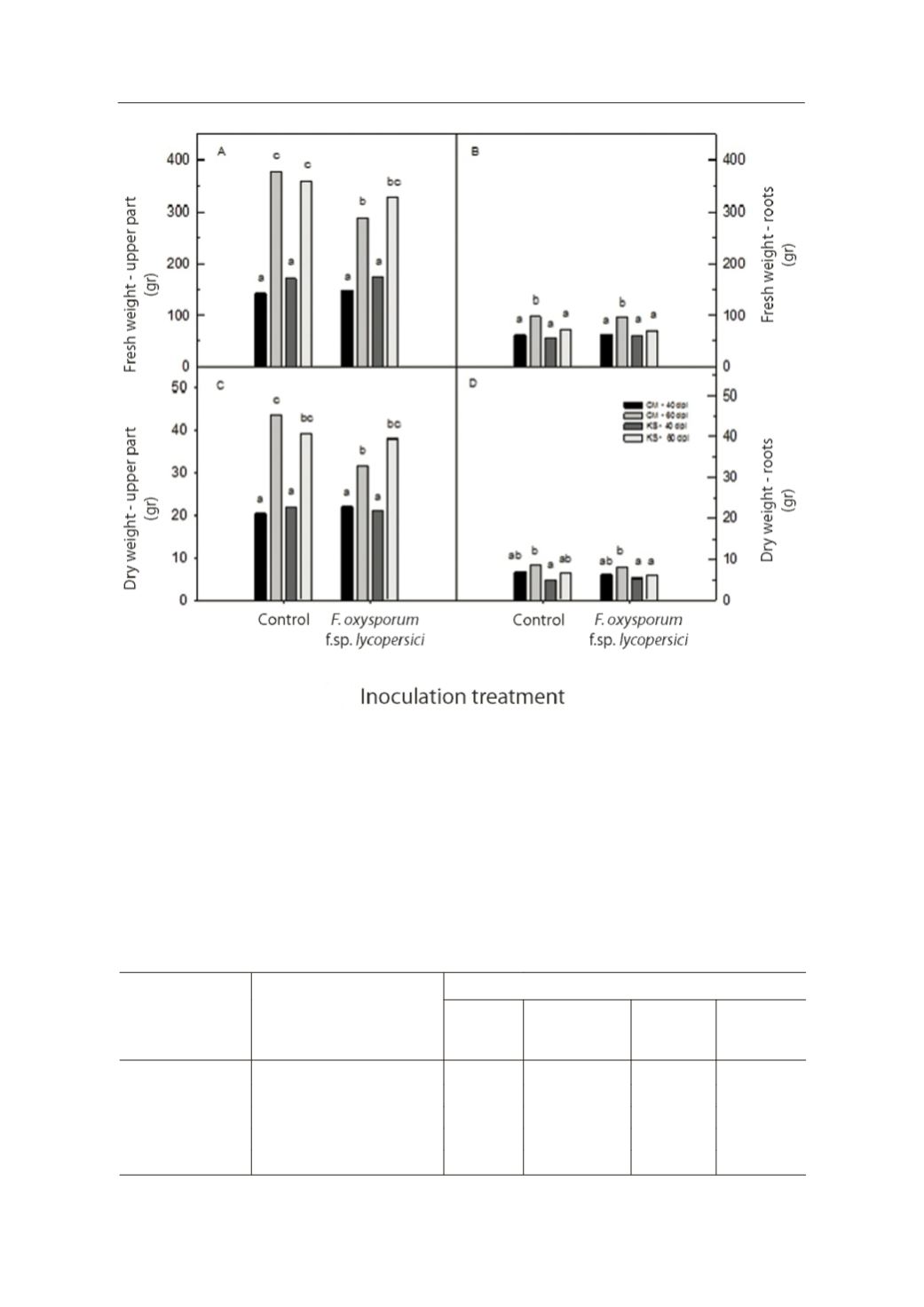
© Benaki Phytopathological Institute
Darras
et al.
76
Table 3.
Effect of
Fusarium oxysporum
f. sp.
lycopersici
on the number of flowers, CO
2
assim-
ilation (
A
s
), stomatal conductance (
g
s
) and transpiration (
E
) of tomato plants of vars ‘Chon-
drokatsari Messinias’ and ‘Katsari Santorinis’. Data are means of six replicates and were re-
corded 16 and 27 dpi. Means followed by different letters are statistically different according
to the Duncan’s Multiple Range test (
P
= 0.05).
Variety
Treatment
Variables
Number of
flowers
A
s
(μmol CO
2
/m
2
/s)
g
s
(mmol /m
2
/s)
E
(mmol /m
2
/s)
‘Chondrokatsari
Control
0.65 a
9.60 a
0.23 ab 2.58 ab
Messinias’
F. oxysporum
f. sp.
lycopersici
1.68 a
8.84 a
0.21 a
2.36 a
‘Katsari Santorinis’
Control
8.85 c
10.43 a
0.32 b
2.98 b
F. oxysporum
f. sp.
lycopersici
5.00 b
9.89 a
0.30 b
3.32 b
Figure 3.
Fresh weight (FW) and dry weight (DW) of the aerial parts (A, C) and the root system (B, D) of ‘Chondrokatsari
Messinias’ (A, B) and ‘Katsari Santorinis’ (C, D) tomato plants inoculated with
Fusarium oxysporum
f. sp.
lycopersici
. Data are
means of six replicates. FW and DWwere measured 40 and 60 dpi. Columns followed by different letters are statistically dif-
ferent according to the Duncan’s Multiple Range test (
P
= 0.05).


